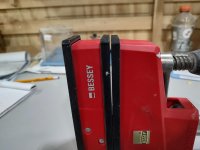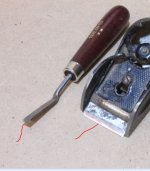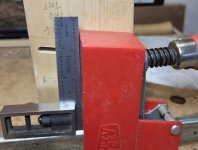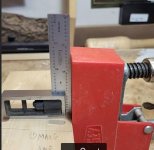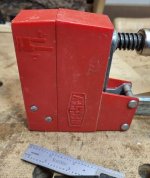Packard
Member
ChuckS said:Packard said:What is the advantage of those clamping squares over picture framers’ corner squares?
I have 8 or 10 of the picture framers squares and if there is any shortcoming it is that they only go up to about 3=1/2” width.
They are accurate, clamp securely (with no parts to misplace) and (most of all) they are cheap.
I would consider those corner clamps, but I don’t understand the advantage.
The clamping squares or braces work like an extra pair of hands for assembly jobs. They do not replace clamps in a glue-up.
When this brace first came out (owner Jerry sold them at trades shows -- 20 years ago?), people found it interesting. Like tracks (tracksaw tracks), they were popular.https://www.leevalley.com/en-ca/shop/tools/jigs-guides-and-fixtures/51101-90-assembly-braces
Jerry now sells braces of different sizes too.
That was not really the point I was trying to make.
I use these clamps to perform the same function as the corner braces shown in the earlier post. They are much cheaper, have no loose components to lose, and appear to me to do the same job. I have 8 of these that are not mounted and four that are mounted, each with a 8” x 8” x 3/4” piece of plywood.

I see them on Amazon for about $4.00 each.
I see the newer type selling for $20.00 each ($80.00 for a set of four).
These look pretty, but seem no more functional that the $4.00 clamps.





